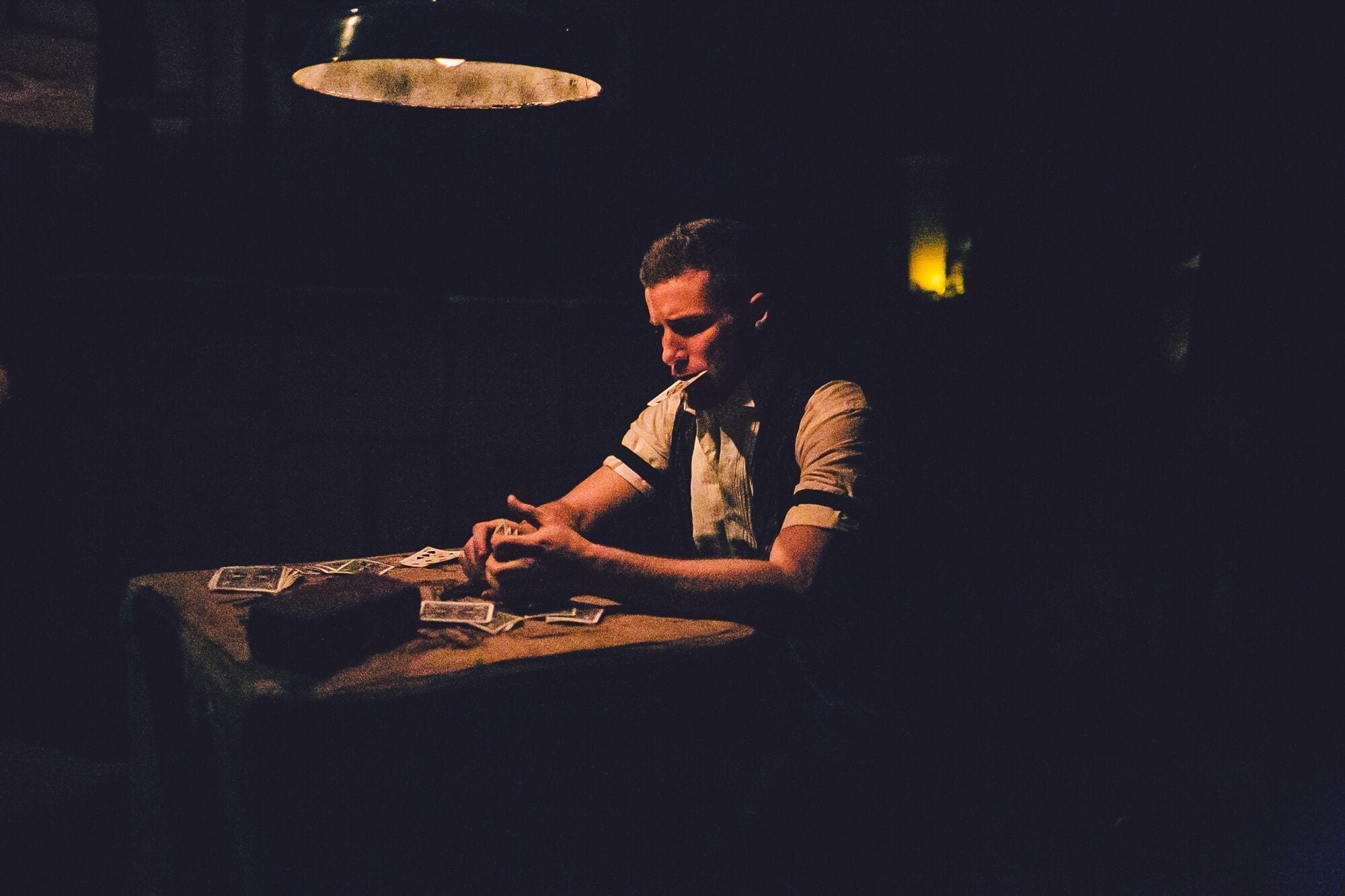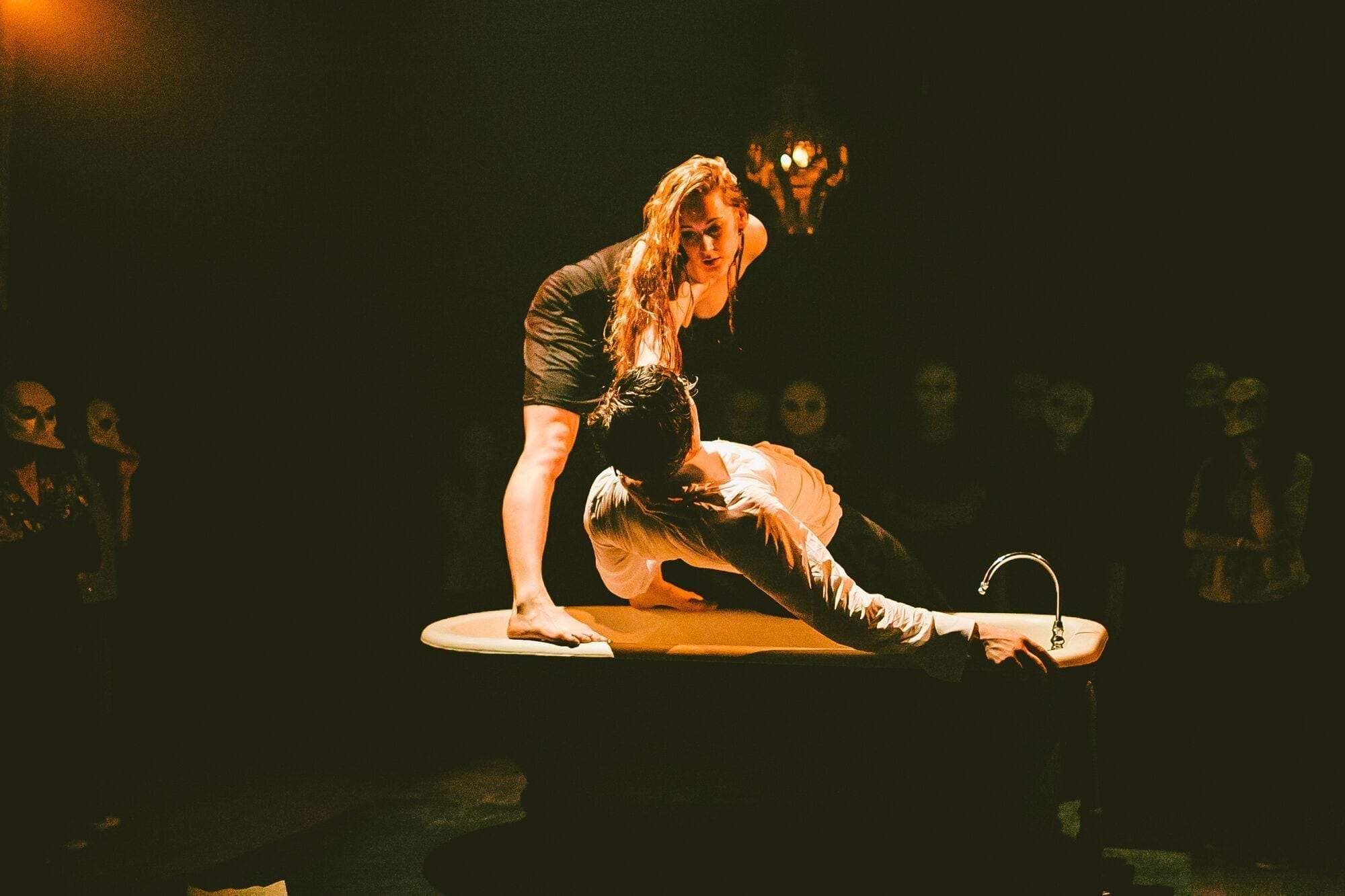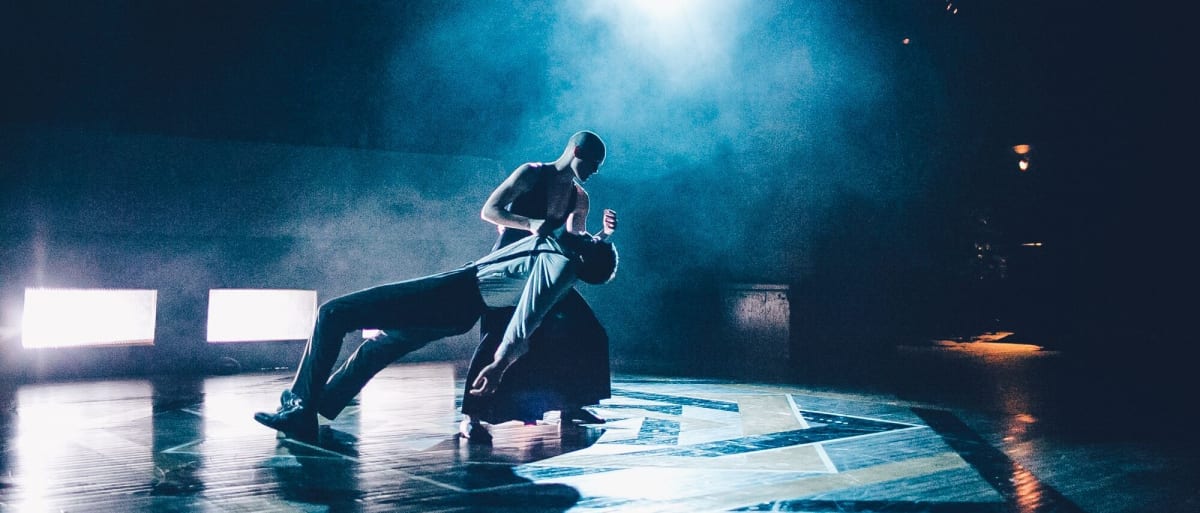The McKittrick Hotel is dark. It’s one of the first things you must adapt to if you are to make your way in the world that is Sleep No More. In one of the many, many rooms, at a bar made entirely of cardboard and lit only by a dim lamp, a man is silently offering a deck of cards to the spectators on the other side of the bar. A spectator pulls the card that he is looking for. In response, he offers her a shotglass filled with an unidentified liquid. Whiskey? We don’t know. She hands it back to him, untouched. He offers it to another spectator, watching her carefully. This one takes the shotglass, hesitates, and then drains it.
In a broad sense, Sleep No More is a retelling of Macbeth. And yes, all the characters are there. Macbeth and Lady Macbeth stalk the eerie hallways, muttering to themselves and sometimes covered in blood. You can pick out other characters if you know the story well enough. Duncan, murdered for his throne. Banquo, murdered for his destiny. Three witches, writhing and dancing and seducing, wreaking havoc together and apart. But Sleep No More, for the curious spectator, is better defined in the choices you make between the action. Would you take the shotglass? The more risks you take, the more interesting your night will become. As they will tell you, fortune favors the bold.

Besides the story of Macbeth which creates the solid foundation of this show, Sleep No More leans into the eeriness of the Shakespearean story by reframing it, not in a Scottish castle, but in a luxury hotel in the 1930s. Hence the name of the venue – the McKittrick Hotel, which is actually a five- or six-story warehouse in which every miniscule detail has been slaved over. Take the time to have a look inside drawers, underneath half-full cups of tea, at the menus in the breakfast room (Aberdeen butteries, anyone?). You’ll keep coming up against details that cement the idea that you are actually a guest in this hotel, witnessing the unraveling of its noble visitors.
The tragic Shakespearean sequence of events lends itself naturally to the Hitchcock-esque ambience of the environment. You are essentially transported to the 1930s amidst the garbled warbling of the Ink Spots and Glenn Miller floating in and out of rooms, beckoning you to follow the action. Added to this perfect mélange – which truly generates a “danger-around-every-corner” vibe that may challenge your determination to be bold – is the acting itself. And it is not traditional acting in any sense. The characters rarely speak, maintaining the mystery of the story, and when they do it’s mumbled, angry, intelligible jargon. Most of the actors’ performances consist of what can only be described as ballet-noir. Fiercely physical, violent, and sexual all at once, the actors speak most loudly with their choreography. They throw themselves and each other around the rooms, off of bookshelves, over bars. Every surface – armchairs, beds, a pool table – becomes a veritable launch pad. Without words, the violence – and perverse sexiness – of the story is conveyed through pure human physicality that needs to be seen to be believed. It makes Sleep No More utterly primeval, but also infinitely more complicated, than any other Macbeth interpretation.

Whatever choices you might make ensures that the night is one that’s hard to repeat or recreate. For instance – as a reviewer, I’d love to have more to say about the tall, dark, brooding Macbeth or the wiry Lady Macbeth. But our paths rarely crossed. In fact, after the show, my guest and I compared how completely different our experiences had been. But no matter what happens to you in there – whether you follow the crowd, or find yourself being pulled alone into a dark room with one of the characters – you’ll come out feeling like a changed person. So thoroughly immersive is Sleep No More that, if you’re not scared off the first time, you’ll dream about coming back.

